
The National Zoological Park, commonly known as the National Zoo, is one of the oldest zoos in the United States. The zoo is part of the Smithsonian Institution and does not charge admission. Founded in 1889, its mission is to "provide engaging experiences with animals and create and share knowledge to save wildlife and habitats".

The San Diego Zoo is a zoo in Balboa Park, San Diego, California, housing 4,000 animals of more than 650 species and subspecies on 100 acres (40 ha) of Balboa Park leased from the City of San Diego. Its parent organization, San Diego Zoo Wildlife Alliance, is a private nonprofit conservation organization, and has one of the largest zoological membership associations in the world, with more than 250,000 member households and 130,000 child memberships, representing more than a half million people.

The Philadelphia Zoo, located in the Centennial District of Philadelphia on the west bank of the Schuylkill River, is the first true zoo in the United States. It was chartered by the Commonwealth of Pennsylvania on March 21, 1859, but its opening was delayed by the Civil War until July 1, 1874. The zoo opened with 1,000 animals and an admission price of 25 cents. For a brief time, the zoo also housed animals brought to U.S. from safaris by the Smithsonian Institution, which had not yet built its National Zoo.
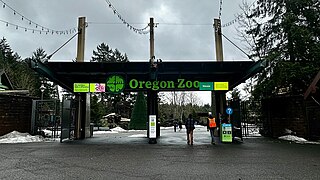
The Oregon Zoo, originally the Portland Zoo and later the Washington Park Zoo, is a zoo located in Washington Park, Portland, Oregon, approximately 2 miles (3.2 km) southwest of downtown Portland. Founded in 1888, it is the oldest zoo west of the Mississippi River.

Zoo Atlanta is an Association of Zoos and Aquariums (AZA) accredited zoological park in Atlanta, Georgia. The current president and CEO of Zoo Atlanta is Raymond B. King.
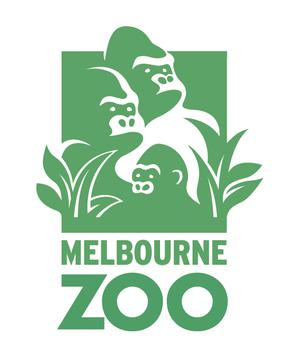
Melbourne Zoo is a zoo in Melbourne, Australia. It is located within Royal Park in Parkville, approximately 4 kilometres (2.5 mi) north of the centre of Melbourne. It is the primary zoo serving Melbourne. As of 2021 the zoo contains 3742 animals comprising 243 species, from Australia and around the world. The zoo is accessible via Royal Park station on the Upfield railway line, and is also accessible via tram routes 58 and 19, as well as by bicycle on the Capital City Trail. Bicycles are not allowed inside the zoo itself.

The Riverbanks Zoo and Garden is a 170-acre (69 ha) zoo, aquarium, and botanical garden located along the Saluda River in Columbia, South Carolina, United States. A small portion of the zoo extends into the nearby city of West Columbia. It is operated by the Rich-Lex Riverbanks Park Special Purpose District, a partnership of the city of Columbia and Richland and Lexington counties. It is overseen by the Riverbanks Park Commission, comprising two members each from the three governments and one at-large member.

The Los Angeles Zoo and Botanical Gardens is a 133-acre (54 ha) zoo founded in 1966 and located in Los Angeles, California, United States. The city of Los Angeles owns the zoo, its land and facilities, and the animals.
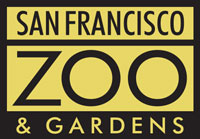
The San Francisco Zoo is a 100-acre (40 ha) zoo located in the southwestern corner of San Francisco, California, between Lake Merced and the Pacific Ocean along the Great Highway. The SF Zoo is a public institution, managed by the non-profit San Francisco Zoological Society, a 501(c)(3) organization. As of 2016, the zoo housed more than one thousand individual animals, representing more than 250 species. It is noted as the birthplace of Koko the gorilla, and, from 1974 to 2016, the home of Elly, the oldest black rhinoceros in North America.
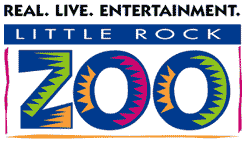
The Little Rock Zoo was founded in 1926 and is located in Little Rock, Arkansas, United States. It is home to more than 725 animals representing over 200 species, and covers an area of 33 acres (13 ha). The Arkansas Zoological Foundation is a private 501 c (3) organization that raises funds for zoo development. The Little Rock Zoo is a department of the city of Little Rock. It is the largest zoo in Arkansas, and the only Arkansas zoo accredited by the Association of Zoos and Aquariums (AZA).

The Birmingham Zoo is a zoological park that opened in 1955 in Birmingham, Alabama, United States.
The Fort Worth Zoo is a zoo in Fort Worth, Texas, United States, and is home to 7,000 native and exotic animals. It has been named as a top zoo in the nation by Family Life magazine, the Los Angeles Times and USA Today, as well as one of the top zoos in the South by Southern Living Reader's Choice Awards.

ABQ BioPark Zoo, located in Albuquerque, New Mexico, is a facility of the Albuquerque Biological Park. Founded in 1927, the 64-acre (26 ha) zoo was originally known as the Rio Grande Zoo. Sections of the zoo include an Africa exhibit area, an Australia exhibit area, the "Cat Walk" and a herpetology area. An endangered species carousel was added in 2016. A narrow-gauge railroad connects the zoo to the other facilities of the Albuquerque Biological Park. Walking distance through the zoo is 2.27 miles (3.65 km).
The Roger Williams Park Zoo of Providence, Rhode Island, contains more than 800 animals in natural settings from a total of 160 species from around the world. In 1986, the zoo became the first zoo in New England to earn accreditation from the Association of Zoos and Aquariums. Founded in 1872, the zoo is the third oldest zoo in the nation. The zoo and the nearby Carousel Village are some of the main attractions of Roger Williams Park.
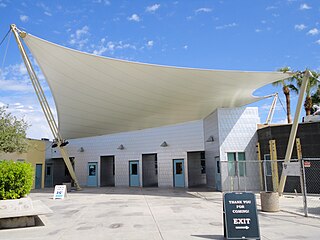
The Reid Park Zoo, founded in 1967, is a 24-acre (9.7 ha) city-owned and -operated nonprofit zoo located within Reid Park in Tucson, Arizona. The zoo features more than 500 animals. It was unofficially established in 1965 by Gene Reid, the parks and recreation director at the time. The zoo boasts approximately 500,00 visitors each year. It is accredited and certified with the Association of Zoos & Aquariums.
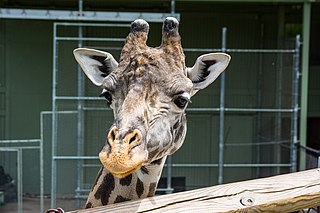
The American Species Survival Plan or SSP program was developed in 1981 by the (American) Association of Zoos and Aquariums to help ensure the survival of selected species in zoos and aquariums, most of which are threatened or endangered in the wild.

The San Antonio Zoo is an Association of Zoos and Aquariums-accredited zoo in Midtown San Antonio, Texas, United States. It is located in the city's Brackenridge Park. San Antonio Zoo is a 50+ acre zoo home to over 750 species, some of which are endangered or extinct in the wild, and an annual attendance of more than 1 million. It also runs non-animal attractions, such as the 2 ft narrow gauge San Antonio Zoo Eagle train ride, which first opened in 1956.

The Welsh Mountain Zoo is a zoological garden located near the town of Colwyn Bay in Conwy County Borough, Wales. The zoo was opened on 18 May 1963 by the wildlife enthusiast and naturalist Robert Jackson. The zoo covers an area of 37 acres (15 ha).
Miller Park Zoo is a zoo located in Miller Park, a public park in Bloomington, Illinois, United States. It is administered by the Parks and Recreation Department of the City of Bloomington.
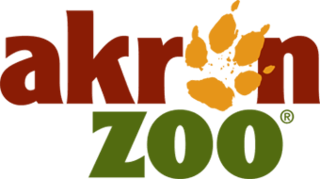
The Akron Zoo, officially known as the Akron Zoological Park, is a non-profit zoo located just west of downtown in Akron, Ohio, United States. The zoo sits on 77-acre (31 ha) of which 35-acre (14 ha) are occupied with by habitats, amenities, and support.
































